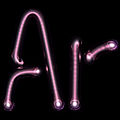Wikipedia:Peer review/Noble gas/archive1
- A script has been used to generate a semi-automated review of the article for issues relating to grammar and house style. If you would find such a review helpful, please click here. Thanks, APR t 02:28, 9 February 2008 (UTC)
This peer review discussion has been closed.
I've listed this article for peer review because I want to bring it to make it a GA. I am just not sure what would it require besides copyediting. Thanks, Nergaal (talk) 04:09, 6 February 2008 (UTC)
- I will try to make some comments in the next day or two. Ruhrfisch ><>°° 01:43, 21 February 2008 (UTC)
- Me too. Sorry for the long wait! --Itub (talk) 08:00, 21 February 2008 (UTC)
Comments by Itub
Note: I'm not focusing specifically on GA criteria, but just on improving the article in general.
In general, I think the article is too short. I know much of it is summary style, but still I think more meat should be brought in from the articles on the specific gases and other subsidiary articles. Specifically:
The history section could be expanded to include the "pre-history" of the discovery by Henry Cavendish of the anomalous density of atmospheric nitrogen, and also to mention the order in which all the noble gas were discovered and when. Also mention the history of noble gas compounds.
The applications section could also have more examples taken from the articles on each gas and also from the article on neon lights. I suggest adding some figures here; for example I happen to like the ones below. :) There are probably many important applications missing, but a huge one that comes to mind right away is the cryogenic use of liquid helium (without it we wouldn't have NMR and MRI! ;-).
-
Neon gas. This is the most commonly used of the noble gases.
-
Argon (with mercury). The second most common after neon.
-
Helium.
-
Krypton.
-
Xenon.
- The physical properties section could use some descriptive text in addition to the data table. For example, a description of the group trends. Perhaps a plot could be added showing how the melting and boiling points change throughout the series.
I would rename the "chemical makeup" section to "chemical properties". Perhaps I would also create a separate section about noble gas compounds. Some specific examples of the most common compounds (such as the xenon fluorides) should be added, ideally with figures.
- I suggest adding a discussion of the theory of bonding in noble gases, and particularly the three-center four-electron bond. This could probably go under chemical properties, or maybe under compounds.
- I suggest adding a section about production. Most of the gases (Ne-Xe) are produced together, from air, so this is the perfect place to discuss the whole process in more detail than can be given in articles about specific gases. It is also the perfect place to add a table comparing the production volumes and price trends for each gas. As references, I suggest the articles on noble gases from the Kirk-Othmer Encyclopedia and from Ullmann's Encyclopedia, as well as the chapter from Greenwood & Earnshaw.
- Something more advanced that perhaps could be added is a discussion of intermolecular interactions between the noble gas atoms and the role they played in the history of physical chemistry/chemical physics (e.g., the Lennard-Jones potential, the London forces, and so on).
I would add some mention of the abundance of each noble gas in the atmosphere, whether in the production section or some paragraph elsewhere about "natural occurrence". A brief mention of abundances in other planets might be good.
- Some mention of the infamous role of radon: its radioactivity, how it is formed, and the health risks.
Hope this helps. --Itub (talk) 14:01, 21 February 2008 (UTC)
Comments by Cryptic C62
The Noble Gas Notation section needs:
*Expansion
- Better explanation for t3h noobs
References
--Cryptic C62 · Talk 05:23, 24 February 2008 (UTC)
Ruhrfisch comments I agree with the previous comments - the references need to be greatly expanded and the article needs to cite more print sources (the individual articles I checked have decent refs). I would also do more comparisons of the specific properties of the elements and their histories - for example the etymologies of the individual gases could be given. Specifics are better than generalities - perhaps more tables of properties. Show where they are different too - not all these gases react, only the last two are radioactive, etc. Ruhrfisch ><>°° 14:31, 25 February 2008 (UTC)





